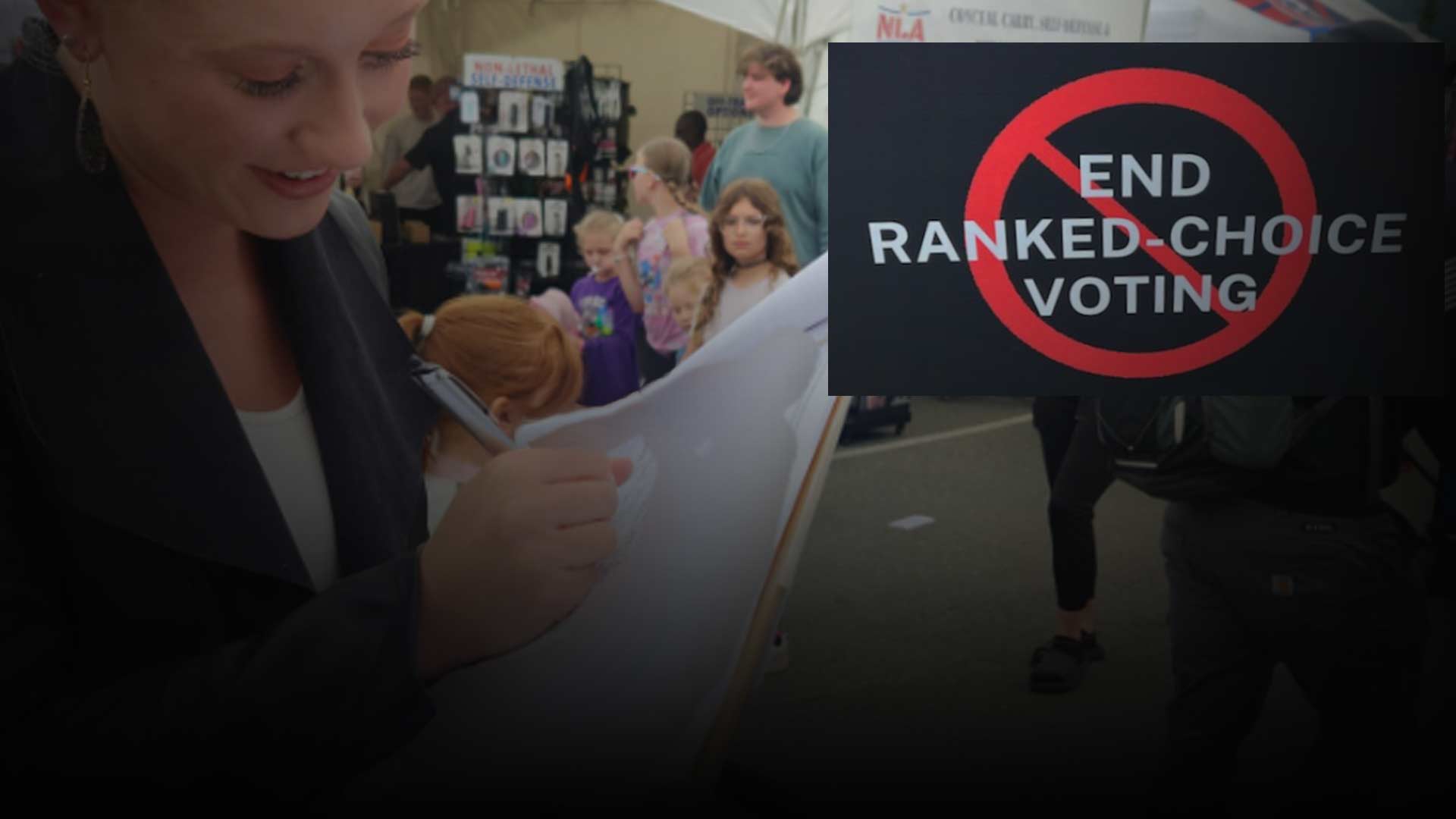
An entire decade. That’s how long Alaska’s public schools have ranked in the bottom five states for fourth-grade reading, regardless of income level. The pandemic has only exacerbated the struggles of Alaska’s students. All of our children deserve the best lives possible, and they need to be strong readers to succeed in today’s world. Regrettably, Alaska’s public schools are failing to teach our children to read.

Learning to read before the age of nine (typically fourth grade) is imperative for our children. If we fail to prioritize learning to read, so that our children can read to learn, long-term implications on our economy and the fabric of Alaska are unavoidable. Students who cannot read by the end of the third grade are four times more likely to drop out of high school; high school dropouts make up 75% of citizens receiving food stamps and 90% of Americans on welfare. Nearly 85 percent of teenagers in the juvenile justice system cannot read to learn, and 7 out of 10 adult prisoners cannot read above a fourth-grade level.
Some in Alaska simply call for more education funding. But Alaska already spends more per capita on education than the majority of states. Look what that money has paid for – the bottom of the educational barrel, so to speak. Clearly, throwing more money at public schools is not the answer.
A strong reading initiative, such as Read by Nine, could make the difference. Read by Nine starts by ensuring kindergartners know the ABCs and the sounds they make. Throughout early elementary school, teachers continue this focus and rely on research-based methods, until by third grade each student can read with ease, understand the material and think critically.
Easy-to-use diagnostic tests are used to help teachers identify which students are having difficulties and what solutions will help them. For those students, a series of interventions is provided, such as one-on-one tutoring and at-home support from kindergarten through third grade. We want each Alaskan child entering fourth grade to do so with the confidence and skills they need to learn and succeed.
Since 2013, a policy like Read by Nine has been introduced in every single session of the Alaska Legislature, but to no avail. That’s nine years of lost reading skills for our children. In 2013, Mississippi passed a strong reading initiative – the year both Mississippi and Alaska ranked 49 out of 51 (including the District of Columbia) for fourth-grade reading. But by 2019, the most recent year with data, Mississippi’s low-income students rose to third in the nation. If Alaska had passed Read by Nine legislation the year it was first introduced, our children could be performing as well as Mississippi and the national average, if not better.
That’s nine years of progress, lost.
Others claim that reading standards are too abstract for children who come from different backgrounds. They’re wrong. Literacy is equity.
ALASKA WATCHMAN DIRECT TO YOUR INBOX
Science-backed standards set by Read by Nine legislation would make it clear which students are struggling or falling behind, so that teachers, administrators and parents can better jump to their aid. This is particularly important for our vulnerable children – those learning English as a second language, those needing special education, and those living in poverty.
Mississippi has the highest poverty rate in the nation, where 74% of students are eligible for free and reduced lunch and 56% of students are non-white. Yet Mississippi students across the racial and income spectrums have seen rapid progress in reading proficiency since implementing a reading initiative in 2013.
And in Alaska, schools with Yup’ik immersion programs generally have English Language Arts (ELA) proficiency rates much higher than nearby programs with no Yup’ik instruction.
Now is the time for Alaska to implement a strong reading initiative. Not next year, not nine years from now. Every child – regardless of their income level, race or first language – deserves a fighting chance to reach their potential and to fully embrace their dreams.
This article was jointly authored by the following people: Quinn Townsend (Alaska Policy Forum Policy Manager), Bethany Marcum (Alaska Policy Forum CEO), Kymyona Burk, Ed.D. (Senior Policy Fellow in Early Literacy at Foundation for Excellence in Education), Madeleine Ashour (Senior Advocacy Associate at Foundation for Excellence in Education).








12 Comments
Huh. I’m an experienced educator in both the private and public sectors, and homeschool. I’m baffled by this “Read by 9.” I was reading before kindergarten. My children were reading before kindergarten and one of them has dyslexia and dysgraphia. I’ve had students with severe learning disabilities who could all read by the first grade if not earlier. Why aren’t kids learning to read by the end of Kindergarten/beginning of first grade any longer?! Perhaps the state standards / targets are no longer conforming or lining up with the national educational standards / benchmarks. If your kids have not learned how to read by the end of Kindergarten either you or your school and the teachers there are not doing something right.
WE the folks must get rid of the leftist death grip of UNIONS, and vote in independent school boards, and get rid of lefty leaning administrators. How, you ask? Power of our Tax dollars, our voice and votes. We must re-educate ‘them’ as for whom they work! Sheesh, WE paid and still pay for every ‘brick, heat, water, book, chair. etc.. Yet since 1974.. always as they demand more “for the kids”; WE get to be last in results. No business could survive this. Take a look at how local, small private schools thrive!
This article is forcing parents to work with their kids before they start school. Problem is most parents probably can’t read at a fifth grade level so teaching their kids is not going to be easy.
Great plan but I don’t see it working out very fast.
Read by nine program is going to fail. I already see whoever put it together doesn’t address the root. The only reason the yupik immersion enrolled students read better than the average alaskan student is i seen the english teacher having circle time where the kids were reading together. I would had put my child in the yupik immersion however even here the kids had not been read to enough, enough to had convince me my child would be safer to spend 6 hours a day with children who through a wider experience of books and communities can accept and respect other kids. The children need to be read aloud to and more just than 3 books a day at 1000 books before kindergarten. Its more like 30,000 before age five. I already did so i know it can be done. I agree with neil here the parents don’t share the same intiative as me, so the teachers will have to lengthen their own day to include 2 hrs a day after school volunteering just to do reading excercises, reading games, and read aloud to the kids which is more important for the kids is seeing someone reading to them.
Agree with both Jen and Neil above – parental involvement from the start, reading aloud to our kids daily, literally while still in the womb (I did ) have huge impact on reading development. But also every child is different. Reading aloud was the ticket for me as a child and I have very fond memories of being read to, I was reading before kindergarten. On the other hand one of our own kids, who was later privately diagnosed with auditory processing issues, loved being read to also, but struggled immensely with early learning, and had she been in the public school I wonder if she would have read by age nine. She also went from being a complete non reader to chapter books. This child is the reason we began homeschooling, and I implemented an intensive reading program with her called Spelling to Write and Read. We used that program until 8th grade and had amazing results with not only reading but spelling and writing. That particular child became an exceptional writer whom has been published nationally, graduated from college with honors and is now working on her masters, with the goal of graduating Summa cum laude. I say this because I also believe reading to be so essential to success, along with good writing and communication skills, but also there are developmental variables and making ‘9’ a magic age number just sounds like another government money drain gimmick.
Ou schools are indeed falling short and it is in part the state of families. Too many parents are overwhelmed with the own problems and it is so much easier to park Tommy and Susie in front of electronic devices. It is a wonder any reading aloud in the home occurs today.
The NEA communist dumb down plan is a success…. Gut communist doctrine and reinstitute sane educational values if you want results.
I’m not particularly smart or well educated. I have an experience I can share that I hope helps: I was a “single mom” during the course of 8 years of back-to-back deployments. Both kids were born during this period. It was harrowing to be “everything to everyone.” And despite my best efforts, I couldn’t always read to my kids or spend time doing educational activities. I often fell asleep as soon as I sat down!
Having my husband back in the picture meant that it was possible for one of us to be present with the kids, even if the other was saddled w laundry, cooking, or working over time at the office. We have prioritized family above all else, and made a point to spend our time together on homework, reading a story as a family, doing activities or traveling locally (camping/cabins) and it has made all the difference. Point is: NOTHING can replace an intact family unit with a mother AND a father. The lack of strong families is the root of the disfunction in society. It’s a truth that a lot of people don’t want to hear. The school system can’t fix itself. The government can’t fix it either. The answer to this problem is a retrograde rebound of family values. I’ve had it both ways: single mom, and dual-parent lifestyle. I can tell you with certainty that the latter is best.
Thank you and your husband for your service and sacrifice for our country
Fortunately for all of us who support education, Les Gara has chosen school teacher and education advocate Jessica Cook as his running mate.
Maybe the reason Alaskans score low is because so many of them are not indoctrinated by leftists and so “flunk” these tests that are written not to measure reading skills but to measure levels of political correctness. Even 15 years ago my kids could show me the “right” answers were clearly wrong. For example, there is a paragraph about a woman who is an ethnic minority. Her actions show her to be incompetent and foolish. The multiple choice answers are based not on her actions, but because she is a female minority, the “right” answer is saying she is “resourceful and courageous”. The tests are written by leftists and any clear-thinking individual will certainly not get a good score on these tests even if their reading ability is out of this world. Maybe Alaskan kids just won’t play the leftist game, in which case having low scores isn’t such a bad thing.
Name one other profession where the salary has constantly gone up – while the results of their work has declined steadily.
Our kids were reading by age 2. Both tested college level reading at age 9. Because we decided to put the effort into it.